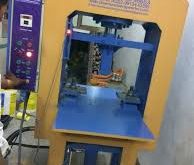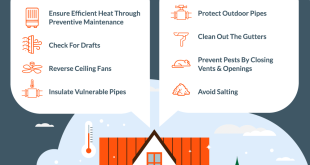Where do you think the air quality is good? In a clean and tidy house, or in a street filled with smog and car exhaust? You might think that the inside is cleaner with large room air purifier than the outside, but you’d be wrong.According to the EPA, indoor air pollutant levels can be at least two to five times higher than normal outdoor levels. Studies have shown that in some areas, indoor air is 100 times more polluted than outdoor air. Considering the average American spends more than 90% of her time indoors, this is an alarming circumstance.
Luckily, there are steps you can take to improve the air quality in your home, such as investing in an air purifier. What are the benefits of air purifiers? You need it? Read on to find out.
How do air purifiers work?
Air purifiers have a fan that draws air into the unit. When air is inhaled, filters trap contaminants and particles and actually pull them out of the air. The cleaned air exits the filter and returns to the room.
No purifier can trap all contaminants and particles that move through the room. Depending on the type of filter used, air purifiers can trap many allergens and other unwanted substances.
Many air purifiers have HEPA filters that trap particles such as dust, pollen, and mold spores. Some air purifiers use other types of filters or technology to clean the air. For example, some air purifiers use ultraviolet germicidal radiation. UV lamps target viruses, bacteria, and fungal spores in the air. Other air purifiers use activated carbon filters that trap odor-causing molecules.
Some machines have filters that can be washed. While others use disposable filters that he usually has to replace after 3, 6 or 12 months.
All air purifiers are designed to clean the air in rooms up to a certain size. Some water purifiers may work in rooms over 500 square feet, while others are designed for rooms up to 150 square feet.
Types of common air purifiers
The most common types of air purifiers are:
HEPA filter
Air purifiers with true HEPA (High Efficiency Particulate Air) filters force air through an ultra-fine mesh that traps dust, house dust mites, mold spores, pollen, smoke, and other harmful particles. increase. The industry standard for HEPA filters requires a laboratory to remove at least 99.97% of 0.3 micron airborne particles.
Beware of “HEPA-type” or “HEPA-like” filter air purifiers. These air purifiers do not meet the certification requirements for True HEPA filters. Some company use the term only as a marketing strategy to persuade consumers to purchase the product. Don’t settle for anything other than an air purifier with a True HEPA filter, they are the gold standard for air purifiers.
Activated carbon filter
Activated carbon air filters work through a process called adsorption. Contaminant particles adhere to the carbon network that forms the core of the filter. HEPA filters trap dust, mold, and other allergens more effectively. While activated carbon filters are better at removing odors, smoke, gases, and volatile organic compounds.
Depending on the types of indoor air pollutants you encounter most frequently, you can choose a HEPA filter model, an activated carbon filter model, or an air purifier with a combination of the two filters to improve the air quality in your home.
Ultraviolet air purifier
UV air purifiers use short-wave UV-C light to inactivate mold, bacteria, viruses, and other airborne pathogens. However, according to the EPA, UV-C air purifiers are not effective as stand-alone units because they do not remove or trap particles. Using a HEPA filter in combination with a UV air purifier may provide slightly better protection against pathogenic microorganisms. If I had to choose one, an air purifier with a HEPA filter would be by far the most effective.
ion air purifier
Electrostatic precipitators and ionizers charge airborne particles, causing them to stick to nearby surfaces or metal plates in purifiers. Some ionic purifiers produce ozone which can be harmful to your health and we do not recommend them.
How to choose the right air purifier for your space
Air purifiers have two roles in cleaning the air in a room. A means of removing harmful particles and gases is required, usually by a series of filters. You also need the ability to circulate most of the air in the room through these filters several times an hour using a fan. You should choose a device that does both jobs well.
The EPA recommends passing all the air in a room through an air purifier five times an hour. To help you determine if a particular air purifier will work in your room, most manufacturers list recommended or maximum room sizes.
While this is a good guideline, it’s also a good idea to check the Clean Air Delivery Rate (CADR) ratings for smoke, dust, and pollen. CADR ratings are better because they are independent of room size. A CADR number indicates how quickly an air purifier removes 100% of specific pollutants such as smoke, dust, and pollen from 1 cubic foot of air per minute. The higher the rating, the more space the air purifier can clean, or the more air changes per hour.
To be sure you’re finding the right air purifier for your space, it’s best to estimate the square footage of the room by multiplying the width of the room by the length, and look for a CADR rating that’s about two-thirds of that number. With the EPA recommendation of 5 air changes per hour, this yields a minimum CADR rating of 65 for a 100 square foot room (8 foot ceiling) and a minimum CADR rating of 390 for a 600 square foot room. means (8ft ceiling). ). If the air purifier you’re interested in doesn’t display a CADR rating or the “AHAM Verified” logo, check out AHAM’s database of CADR certified air purifiers for your room size, brand, and location CADR rating.
While it may seem logical to buy the largest air purifier with the highest CADR rating, “bigger is better, it just doesn’t work,” says AHAM’s vice president of communications and marketing. says one Gilles Notini. “Too much and it gets noisy” and that can lead to turning it off. Air should circulate and air purifier should keep noise to a minimum.
At this time, the CADR rating represents the overall performance of all contaminants. However, because it is important exactly how fast it comes out of the air, AHAM has just released microbiological and VOC CADR test criteria. So from 2023, microbiological (m-CADR rating) and VOC (a help you select a unit for your specific needs.
Who can get the benefits of air purifiers?
Air purifiers can be expensive. So it’s important to team up with your doctor to assess who is most likely to benefit. People can more likely to obtain health benefits in areas where this can mean living in cities with poor air quality or near major sources of pollution.
“This effect may be greater in young children, the elderly, and those with heart or lung disease,” says Dr. Taliercio.
In particular, these devices can help people who already have diseases that affect their lungs, such as asthma, cystic fibrosis, and immune system conditions. you should get an air purifier for cat hair in your home.
 Stride Post Latest News
Stride Post Latest News




